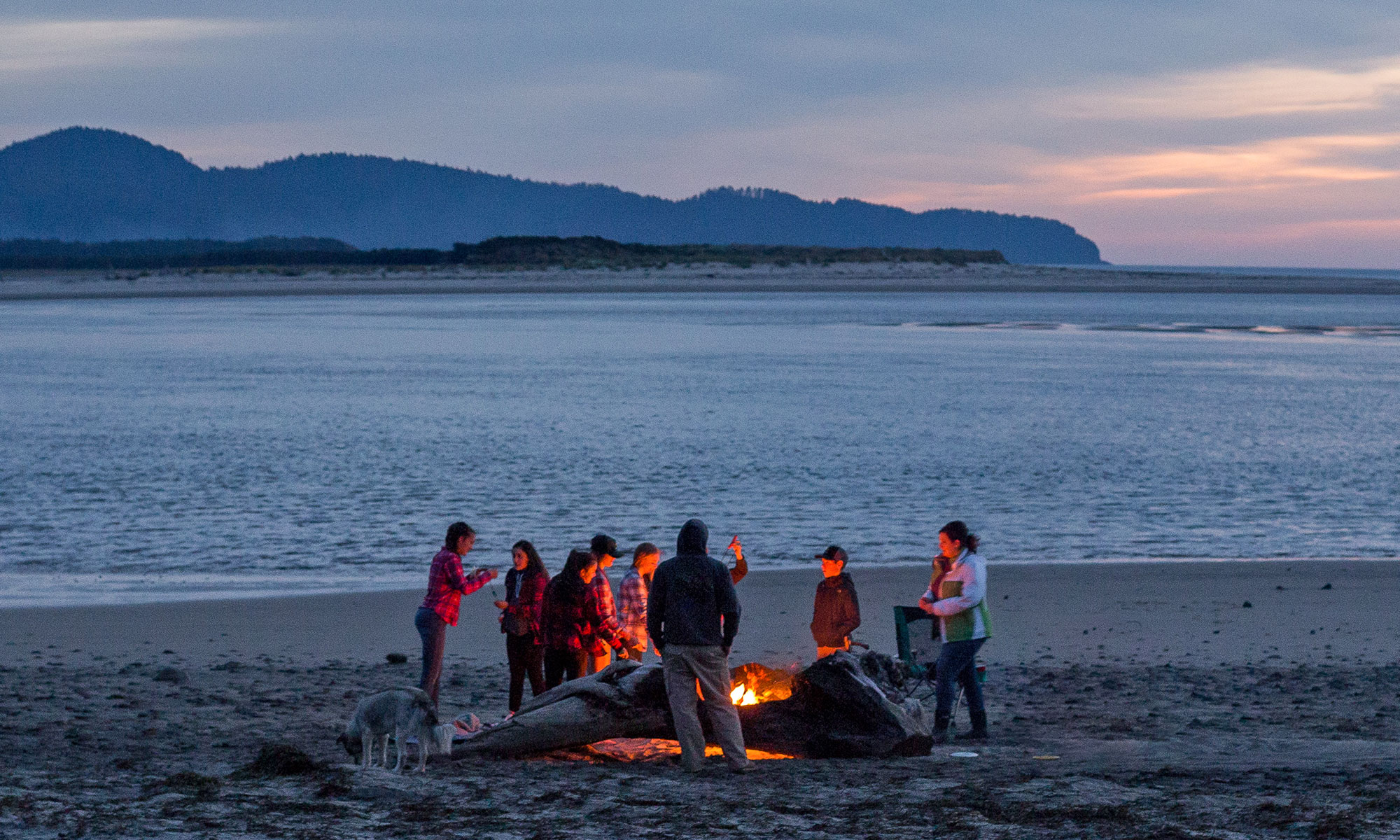We have a Beach for that
The number one reason anyone comes to the Oregon Coast? To spend some time on the beach, of course! Whether your end game is clamming, fishing, crabbing, beach combing, tide pooling, running the dog, surfing, or just catching some rays – we have a beach for that. From the secret steps of Short Beach to the ever-popular Happy Camp we have quick access to several sandy spots along both the Pacific Ocean and bays.
Safety + Stewardship First
Part of enjoying the pristine beaches on the Oregon Coast also means helping to take care of them. If you pack it in, please pack it out. If you’re building a fire keep it clear from all beach vegetation and driftwood piles. Make sure the flames and all hot embers are completely out before you leave and dosed with water; don’t just smother it with sand, as the fire may smolder for several hours and potentially burn unsuspecting bare feet or injure animals.
Sometimes you’ll stumble across some incredible wildlife – be it while enjoying the tide pools during a minus tide, or walking the flotsum and jetsum. While it can be tempting, don’t touch or move the sea creatures that you find. Some of them can appear harmless but be quite dangerous. Others can be severely damaged by human contact. It’s best to observe only with your eyes or the lens of a camera.
When you’re out on the beach, it’s always a good idea to keep your tidebook close by. If you venture out on a low tide always know how much time you need to get back to safety before the tide starts coming in.
Remember to never turn your back on the ocean. Sneaker waves appear suddenly and often without warning. They can surge more than 150 feet up on the beach and can drag unsuspecting beachgoers into the sea. Keep an eye on the water to stay safe, alert and aware.
Riptides also are common along our coastline and happen every day. If you find yourself being pulled away from shore by a rip current, don’t try to swim out of it. Swim parallel to the shore until you can feel the current release you and then start to head inland. To avoid rip currents it is good practice to never venture out into the ocean past where your feet can touch the sand.
Above all else, just remember: Leave it like you found it — or better — and practice beach safety.


